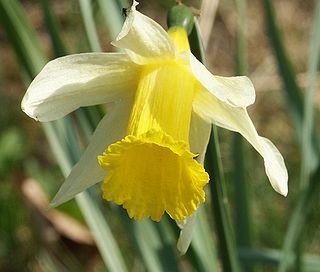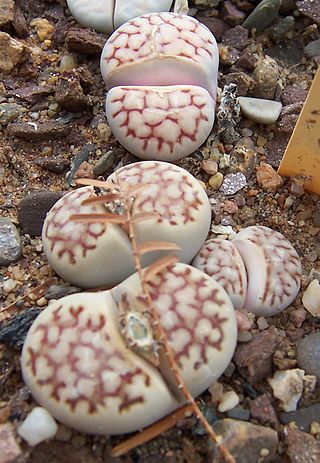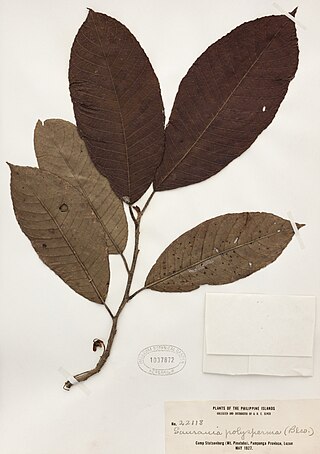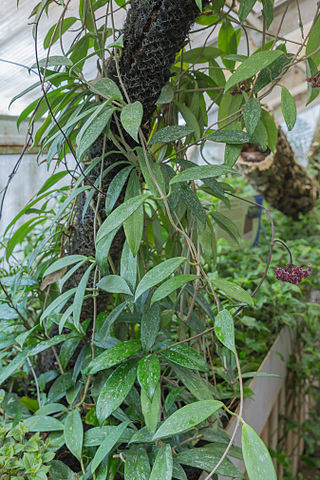
Hoya is a genus of over 500 accepted species of tropical plants in the dogbane family, Apocynaceae. Most are native to several countries of Asia such as the Philippines, India, Thailand, Malaysia, Vietnam, Bangladesh, Indonesia, Polynesia, New Guinea, and many species are also found in Australia.

Armeria maritima, the thrift, sea thrift or sea pink, is a species of flowering plant in the family Plumbaginaceae. It is a compact evergreen perennial which grows in low clumps and sends up long stems that support globes of bright pink flowers. In some cases purple, white or red flowers also occur. It is a popular garden flower and has been distributed worldwide as a garden and cut flower. It does well in gardens designed as xeriscapes or rock gardens. The Latin specific epithet maritima means pertaining to the sea or coastal.

Narcissus pseudonarcissus, commonly named the wild daffodil or Lent lily, is a perennial flowering plant.

Stapelia gigantea is a species of flowering plant in the genus Stapelia of the family Apocynaceae. Common names include Zulu giant, carrion plant and toad plant. The plant is native to the desert regions of South Africa to Tanzania.

Dudleya abramsiisubsp. setchellii, known by common name as the Santa Clara Valley dudleya or Santa Clara Valley liveforever, is a member of the Dudleya genus of succulent perennials, members of the family Crassulaceae. The Santa Clara Valley dudleya, endemic to the Santa Clara Valley region in the southern San Francisco Bay Area, was listed on 3 February 1995, as an endangered species. It is considered to be a subspecies of Dudleya abramsii, but its taxonomic status is still unclear. Its closest relative is Dudleya cymosa subsp. paniculata, which is a morphologically similar sister taxon.

The Desert Garden Conservatory is a large botanical greenhouse and part of the Huntington Library, Art Collections and Botanical Gardens, in San Marino, California. It was constructed in 1985. The Desert Garden Conservatory is adjacent to the 10-acre (40,000 m2) Huntington Desert Garden itself. The garden houses one of the most important collections of cacti and other succulent plants in the world, including a large number of rare and endangered species. The 3,000-square-foot (280 m2) Desert Garden Conservatory serves The Huntington and public communities as a conservation facility, research resource and genetic diversity preserve. John N. Trager is the Desert Collection curator.

Silene campanulata is a species of flowering plant in the family Caryophyllaceae known by the common names Red Mountain catchfly and bell catchfly. It may be a synonym of Silene greenei.

Jasminum didymum is a species of scrambling vine or low shrub. It is native to insular Southeast Asia from Java to the Philippines, as well as Australia, as well as some islands in the Pacific. Jasminum didymum occurs naturally in habitats from rainforests to arid and semi-arid shrublands.

Agave parviflora is a species of succulent perennial flowering plant in the asparagus family, known by the common names Santa Cruz striped agave, smallflower century plant, and small-flower agave. It is native to Arizona in the United States and Sonora in Mexico.

Lithops karasmontana, is a species of flowering plant in the ice plant family Aizoaceae, native to Namibia and South Africa.

Crassula capitella, is a perennial succulent plant native to southern Africa.

Entada phaseoloides, commonly known in English as the matchbox bean or St. Thomas' bean, is a large twining vine or liana in the pea and bean family Fabaceae, native to a broad area of Asia-Pacific, from China to northern Australia and the southwestern Pacific.

Saurauia polysperma is a species of flowering plant in the family Actinidiaceae. It is endemic to the Philippines. In the Philippines it is also known as tsuke. Francisco Manuel Blanco, the Augustinian friar who first formally described the species, using the basionym Gordonia polysperma, named it after its many seeds.
Hoya aurigueana is an endemic species of porcelainflower or wax plant found in the Quezon province, Luzon, Philippines is an Asclepiad species of flowering plant in the dogbane family Apocynaceae described in 2012 by Kloppenburg, Siar & Cajano. Hoya aurigueana belongs to the genus Hoya. There are no subspecies listed.
Hoya blashernaezii subsp. valmayoriana is a subspecies of porcelainflower or wax plant endemic to the Philippines. An asclepiad subspecies of flowering plant in the dogbane family Apocynaceae, it was first described in 2012 by Kloppenburg et al. as Hoya valmayoriana, and in 2014 reduced by the same authors to a subspecies of Hoya blashernaezii. The corolla of its flower is peach-colored. Originally, this species was collected together with seven other hoyas in October 1988 by David M. Cummings, ¾ kilometer north of Lake Bulusan, Sorsogon Province, the Philippines, in dense forest along the roadside. This was the same location as Hoya davidcummingii.

The UPLB Museum of Natural History is a natural science and natural history museum within the University of the Philippines Los Baños (UPLB) campus. It serves as a center for documentation, research, and information of flora and fauna of the Philippines. The museum is one of the research and extension units of the UPLB and its role parallels that of a library for written records.

Hoya pubicalyx is a species of flowering plant in the genus Hoya native to the Philippines. Sometimes confused for Hoya carnosa, it has succulent, lanceolate foliage and grows in a vining habit epiphytically. Kept as a houseplant in temperate climates, it can be found in variegated forms in nurseries. The Philippine five-centavo coin of the New Generation Currency Series features the flowers of this plant.

Dudleya saxosasubsp. aloides is a species of perennial succulent plant in the family Crassulaceae known by the common names desert dudleya or desert savior. It is a rosette-forming species widely distributed throughout the Peninsular Ranges and desert mountains of California in the United States. It is characterized by bright-yellow or greenish-yellow flowers, and can be found in shaded crevices and slopes. Plants in western half of the range may grade into Dudleya lanceolata.

Hoya lacunosa is a species of plant in the genus Hoya native to Southeast Asia. Its native range is Thailand through Borneo, Java, Sumatra, and the Philippines, and it is introduced in other countries as well. Like most Hoya, it is an epiphytic vining climber. It has smooth ovate to lanceolate leaves, and flowers that are scented like cinnamon.


















